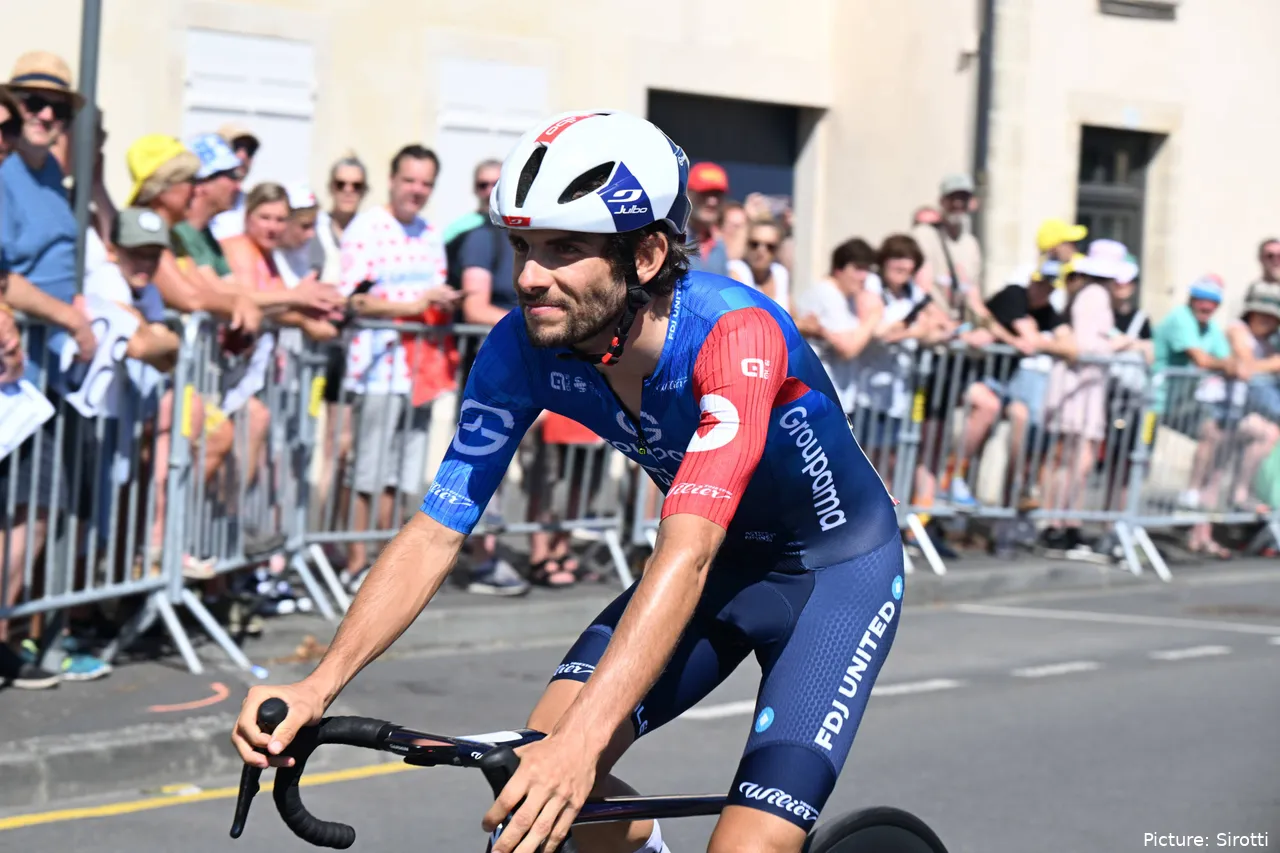The 2025 Il Lombardia marked his fifth appearance at the Race of the Falling Leaves, and for the fifth time, he was unable to factor in the race’s final hour. His DNF in Bergamo was also his first all season. Coming just weeks after returning from injury, it reinforced the reality that the crash in Spain was a season-defining — and perhaps career-shaping — moment.
Fighting back – but not at full power
Martin’s decision to continue racing into October, starting with the Coppa Agostoni and ending at the Veneto Classic, was about more than form or results. It was about taking control of his narrative — and not allowing the Vuelta crash to be the final word.
“It gave me a target, something to motivate me to get back on the bike,” he said. “I’m not at a great level right now, but at least I’ve resumed a normal calendar and can take an off-season break at the same time as everyone else. It means I don’t have to start training again too early in the winter — otherwise, it can feel endless.”
The effort was clearly more symbolic than competitive. “Even though I’m a fighter,” Martin conceded, “there was just no way I could finish Lombardy in this state.”
His decision to race on, however, wasn’t just about fitness; it was about reclaiming rhythm, routine, and psychological stability — not allowing trauma to dictate the off-season. “These races at least stop me from dwelling on the crash all winter.”

Martin in action at La Vuelta before his stage 2 crash
A season in two halves — early promise, late frustration
The 2025 season promised something of a renaissance for Martin. After a long stint with Cofidis, his move to Groupama–FDJ was seen as both a return (he was a stagiaire at FDJ in 2014) and a reset.
The early months were turbulent, with a knee injury stalling his momentum. But by April, signs of form began to emerge. He took two victories in as many days at the Classic Grand Besançon Doubs and Tour du Jura, both in the Franche-Comté region — a hotbed for climbing specialists. He backed that up with a top‑10 overall at the Critérium du Dauphiné and 12th at the Itzulia Basque Country, suggesting he was building toward a solid Grand Tour campaign. “Thankfully, I had those two wins in Franche-Comté — there were a few bright spots in that period. That’s when I was going best. The Dauphiné was decent too.”
The Tour de France, though, brought mixed fortunes. Sixteenth overall was respectable, but Martin was held back by underlying health issues. “I was held back by biological values that were a bit low — especially iron levels.”
His season — and perhaps his confidence — then unravelled at the Vuelta. Just two stages in, on a damp descent, he crashed heavily and abandoned. The diagnosis: two fractured vertebrae.
The rest of the season became a balancing act — managing expectations, regaining fitness, and processing trauma. “I never felt I could fully express my potential at any point this season. It’s been quite frustrating. If you just look at the results on paper, it’s fairly disappointing — one of my weakest seasons, really.”
Team support and looking ahead to 2026
Despite the setbacks, one positive stands out in Martin’s reflections: how well he integrated into his new team. “I’m really pleased with the change and how warmly I was welcomed. I feel good in the team. After my crash, I felt genuinely supported — and it’s easy to feel sidelined in moments like that.”
That feeling of belonging has helped shape his outlook for 2026. Determined to avoid stagnation, Martin is considering beginning his season at the Tour Down Under in January — a race he’s never ridden. “I’d like to shake up the winter routine. I’m seriously considering riding the Tour Down Under — I’ve always wanted to experience Australia at least once. It’s not confirmed yet, but there’s a good chance I’ll go.”
Still, he’s not planning a revolution in his calendar. The monuments remain non-negotiable. “There are races I’m really attached to, like the Tour de France and Liège–Bastogne–Liège. In 2026, what I really hope is to get back to the level I had earlier this year — especially in the spring.”
He will head into the off-season with more questions than answers: about his body, his recovery, and what level he can realistically return to in 2026. Yet, amid the frustration and uncertainty, there remains the quiet defiance of a rider unwilling to let a crash define him.

